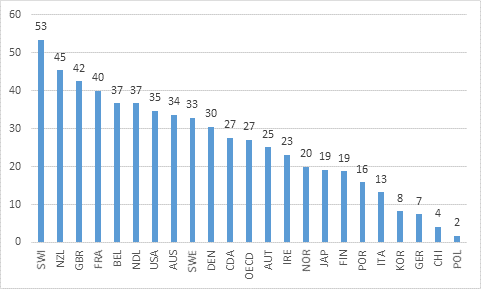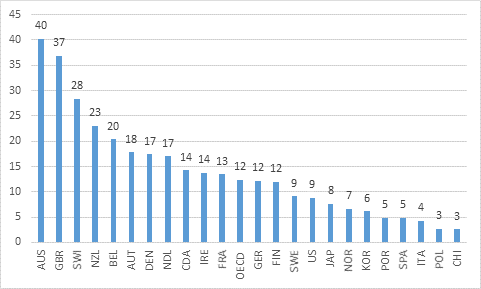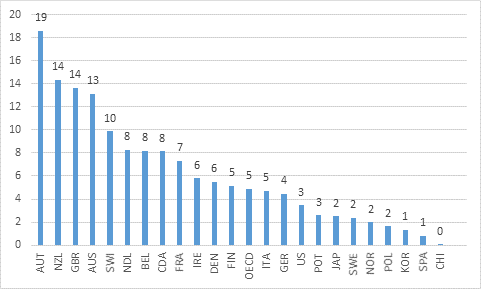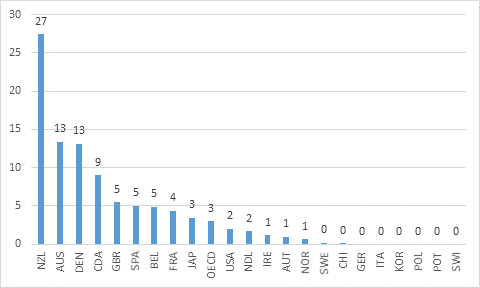 Who’s More International?
Who’s More International?
We sometimes think about international higher education as being “a market”. This is not quite true: it’s actually several markets.
Back in the day, international education was mostly about graduate students; specifically, at the doctoral level. Students did their “basic” education at home and then went abroad to get research experience or simply emigrate and become part of the host country’s scientific structure. Nobody sought these students for their money; to the contrary these students were usually getting paid in some way by their host institution. They were not cash cows they did (and still do) contribute significantly to their institutions in other ways, primarily as laboratory workhorses.
In this market, the United States was long the champion since its institutions were the world’s best and could attract top students from all over the world. In absolute terms, it is still the largest importer of doctoral students. But in percentage terms, many other countries have surpassed it. Most of them, like Switzerland, are pretty small and small absolute numbers of international students nevertheless make up a huge proportion of the student body (in this case, 55%). The UK and France, however, are both relatively large markets, and despite their size they now lead the US in terms of percentage of doctoral students who are international (42 and 40% vs 35%). Canada, at 27%, is at right about the OECD average.
Figure 1: International Students at Doctoral Level as Percentage of Total

Let’s turn now to Master’s students, who most definitely *are* cash-cows. Master’s programs are short degrees, mainly acquired for professional purposes and thus people are prepared to pay a premium for good ones. The biggest market here are for fields like business, engineering and some social sciences. Education could be a very big market for international Master’s but tends not to be because few countries (or institutions, for that matter) seem to have worked out the secret for international programs in what is, after all a highly regulated profession. In any case, this market segment is where Australia and the UK absolutely dominate, with 40 and 37% of their students being international. Again, Canada is a little bit better than the OECD average (14% vs. 12%).
Figure 2: International Students at Master’s Level as Percentage of Total

Figure 3 turns to the market which is largest in absolute terms: undergraduate students. Percentages here tend to be smaller because domestic undergraduate numbers are so large, but we’re still talking about international student numbers in the millions here. The leader here is – no, that’s not a misprint – Austria at 19% (roughly half of them come from Germany – for a brief explainer see here). Other countries at the top will look familiar (Great Britain, New Zealand, Australia) and Canada doesn’t look to bad, at 8% (which strikes me as a little low) compared to an OECD average of 5%. What’s most interesting to me is the US number: just 3%. That’s a country which – in better days anyway – has an enormous amount of room to grow its international enrollment and if it hadn’t just committed an act of immense self-harm would have be a formidable competitor for Canada for years to come.
Figure 3: International Students at Bachelor’s Level as Percentage of Total
Finally, let’s look at sub-baccalaureate credentials, or as OECD calls them, “short-cycle” programs. These are always a little bit complicated to compare because countries’ non-university higher education institutions and credentials are so different. Many countries (e.g. Germany) do not even have short-cycle higher education (they have non-university institutions, but they still give out Bachelor’s degrees). In Canada, obviously, the term refers to diplomas and certificates given out by community colleges. And Canada does reasonably well here: 9% of students are international, compared to 5% across OECD as a whole. But look at New Zealand: 24% of their college-equivalent enrollments are made up of international. Some of those will be going to their Institutes of Technology (which in general are really quite excellent), but some of this will also be students from various Polynesian nations coming to attend one of the Maori Wānanga.
Figure 4: International Students in Short-Cycle Programs as Percentage of Total
Now if you look across all these categories, two countries stand out as doing really well without being either of the “usual suspects” like Australia or the UK. One is Switzerland, which is quite understandable. It’s a small nation with a few really highly-ranked universities (especially ETH Zurich), is bordered by three of the biggest countries in the EU (Germany, France, Italy), and it provides higher education in each of their national languages. The more surprising one is New Zealand, which is small, has good higher education but no world-leading institutions, and is located in the middle of nowhere (or, at least, 5000 miles from the nearest country which is a net exporter of students). Yet they seem to be able to attract very significant (for them, anyway) numbers of international students in all the main higher education niches. That’s impressive. Canadians have traditionally focused on what countries like Australia and the UK are doing in international higher education because of their past track record. But on present evidence, it’s the Kiwis we should all be watching, and in particular their very savvy export promotion agency Education New Zealand.
Wellington, anyone?


0 Comments